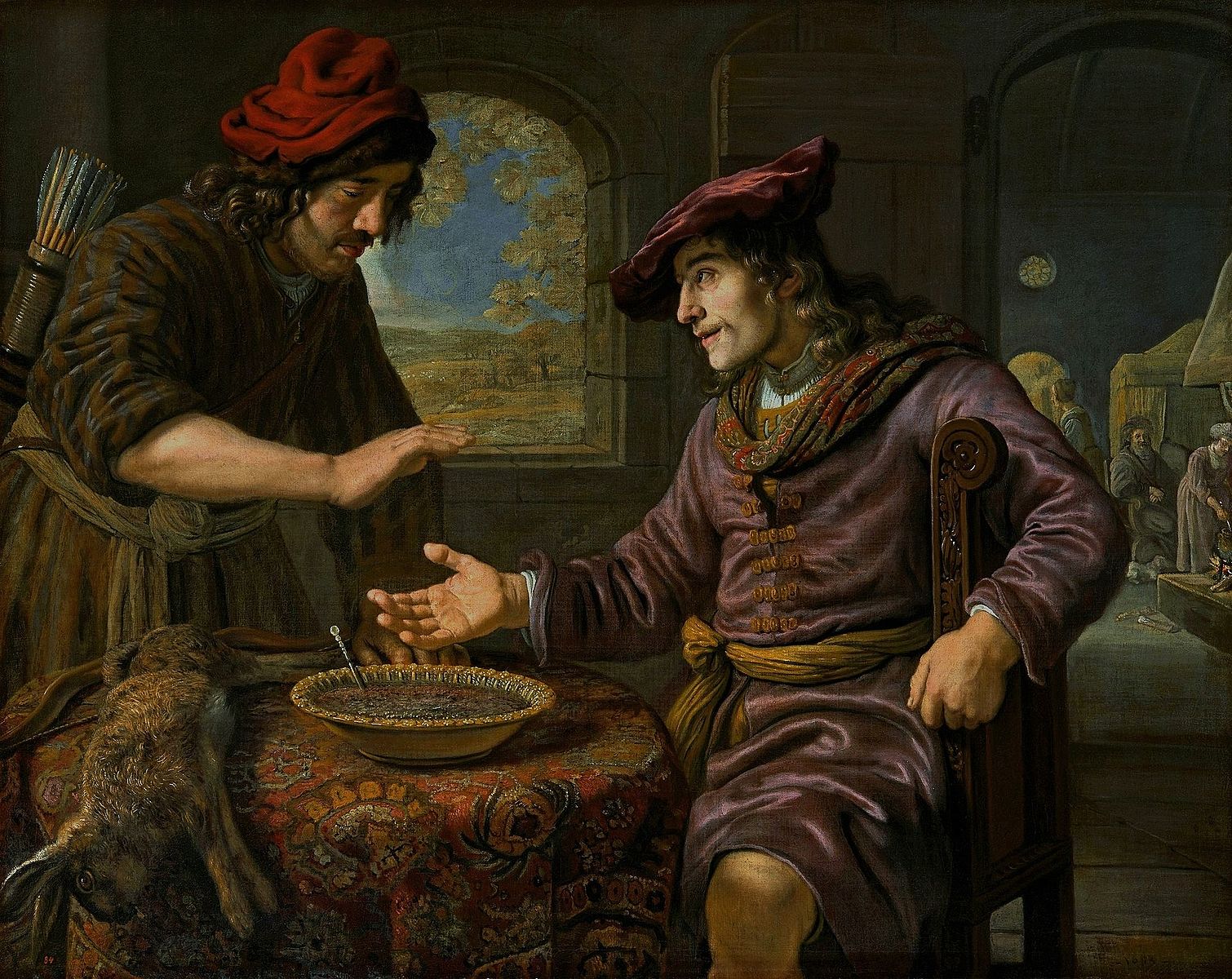Fittingly, with Thanksgiving just a few days away, food plays a
prominent role in this week’s Torah reading.
The portion, Toldot (“Generations”), begins with the birth of Jacob
and Esau, and details the boys’ fraught relationship as they grow up. Most of the drama between them happens around
mealtimes. Jacob convinces Esau to
surrender his birthright in exchange for a bowl of lentil soup, then employs a
dish of roasted goat to trick his father into giving him the blessing of the
first born.
The preeminence of food in this sibling drama is not surprising,
given how central it has been in Jewish culture for well over two thousand
years. But what really constitutes
Jewish food? In his book Rhapsody in
Schmaltz, Michael Wex notes that the only uniquely Jewish food is matzah;
everything else is, essentially, the standard local cuisine, adapted to fit
within the laws of kashrut. It is
no accident that the foods featured in Toldot—lentils and goat meat—are universal
Middle Eastern staples. Sephardic Jewish
cooking features the multitude of spices and flavors readily available in North
Africa. Ashkenazi food, by contrast, relies
heavily upon the relatively few ingredients resilient enough to survive a short
growing season followed by long, bitter winters: dairy products, hardy grains
and root vegetables. As the lyrics of a
classic Yiddish song teach: “Monday: potatoes.
Tuesday: potatoes. Wednesday and
Thursday: potatoes. Friday:
potatoes. On Shabbos: potato kugel.” Where most American Jews now place parsley on
our seder plates, our Ashkenazi ancestors used a potato—because it was the only
“vegetable” available in March in the Russian Pale of Settlement.
What our ancestors did not know—but we do—is that this Jewish
approach to eating has significant impact on our environment, especially around
the issue of catastrophic climate change.
They were eating locally and seasonally long before “farm-to-table”
became trendy. We can lower our carbon
footprints by emulating them.
Our ancestors also practiced the mitzvah of bal tashchit—or
“do not waste.” They lived frugally,
because they had little choice. They
were, mostly, impoverished, and food was scarce. Our challenge is to avoid waste even when we
are living in prosperity. We have a lot
to do here. According to the U.N. Food and
Agriculture Organization, 30 percent of food is wasted globally across the
supply chain, contributing 8 percent of total global greenhouse gas emissions.
If food waste were a country, it would come in third after the United States
and China in terms of impact on global warming.
As Paul Hawken notes in his book Drawdown, cutting food waste is
one of the most important things we can do to combat climate change, with the
same impact as reducing emissions through alternative energy sources.
Finally, we can emulate our ancestors by eating less meat. As the old joke goes, “When a Jew eats a
chicken, one of them is sick.” Reducing the
meat in our diet is another of the most effective ways to reduce greenhouse gases.
The Jewish people have a long history of conscious and
conscientious eating. In our portion,
food is a source of conflict, but if we eat morally, it can be a path of
healing, for us and, fittingly this week, for the toldot—the future
generations—who will inherit the earth we choose to bequeath to them.


